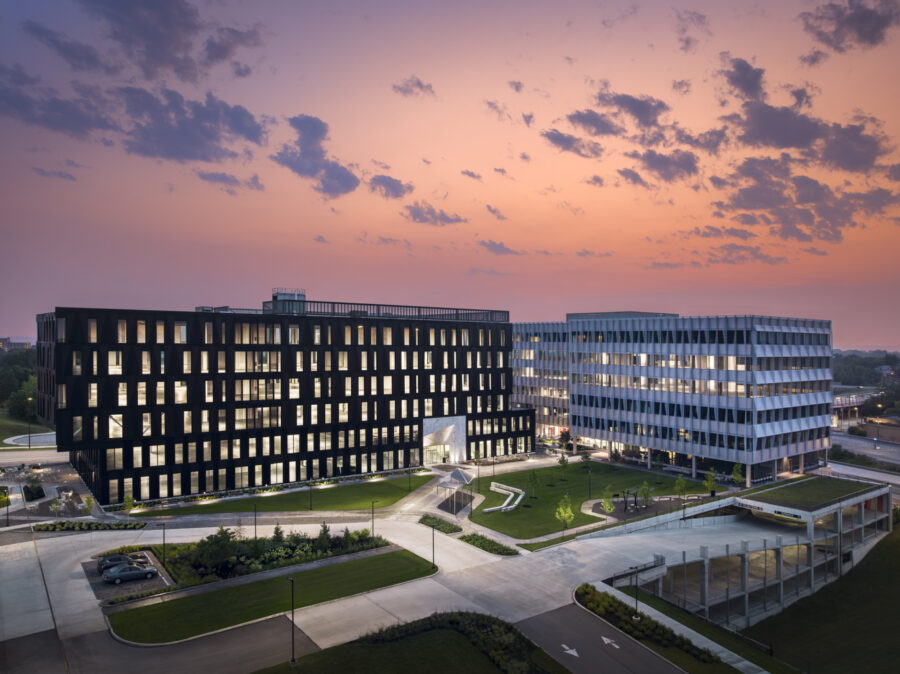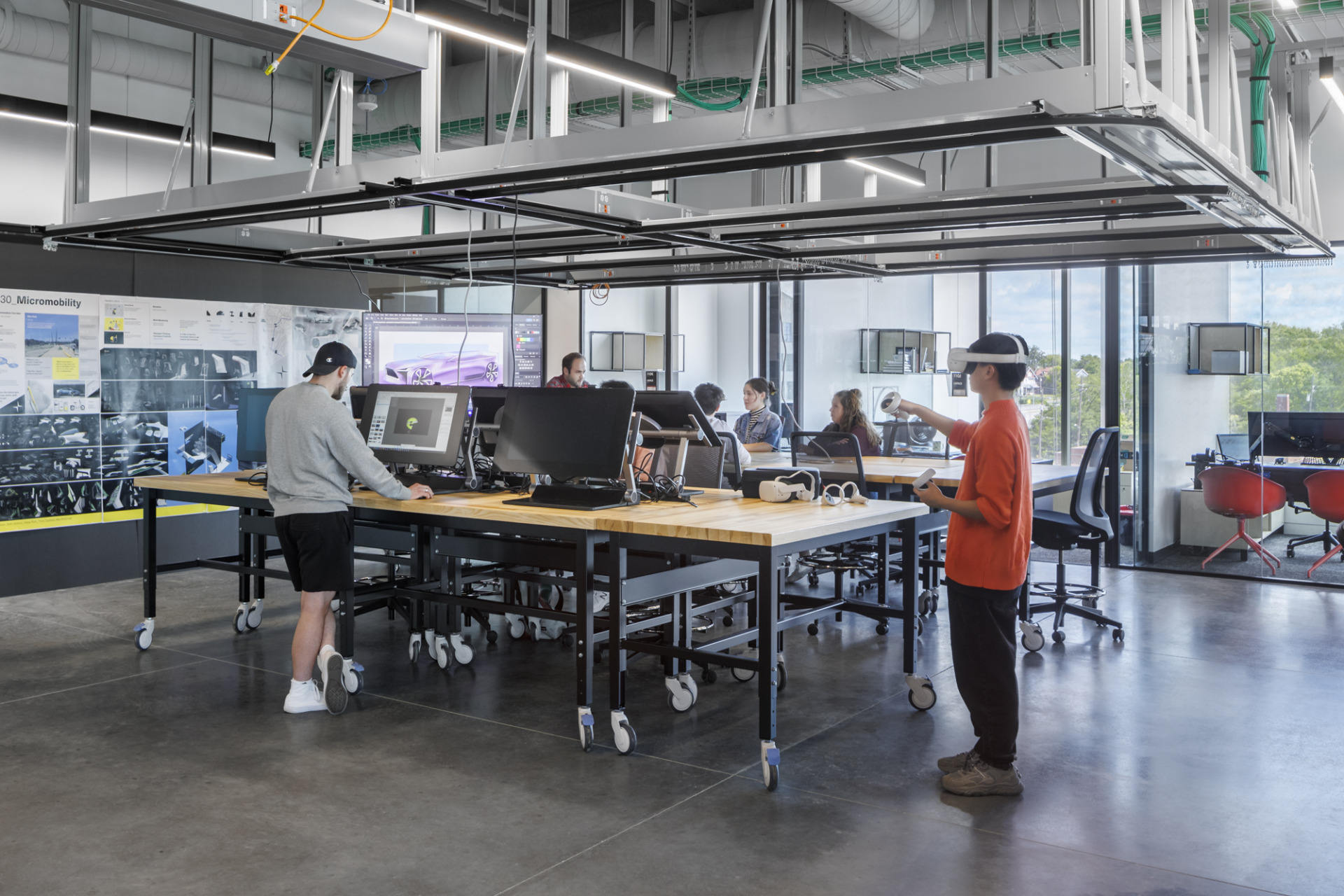Insights
Nov 21, 2023 _ insights
Making Room for Collaboration: Interdisciplinary Research at Digital Futures
University of Cincinnati (UC) recently completed Digital Futures—its first, purpose-built interdisciplinary research building. It was built off campus, at what’s come to be known as the Digital Futures Complex, in the heart of the Cincinnati Innovation District. Why this location? What’s the value in establishing a space for interdisciplinary research off campus?
We discussed these and related questions in a presentation to Tradeline’s Space Strategies Conference, and Tradeline recently published a synopsis of our presentation. Here are a few high-level takeaways:
An off-campus location can help overcome disciplinary and institutional boundaries.
Like many universities, UC has ample research space on campus, but it tends to be “owned” by individual colleges or departments. An off-campus location that is managed by the Office of Research, helps UC keep the space “agnostic,” making it easier for research teams from across the university to rotate in and out of the space without feeling like interlopers. Also, given its location in the Cincinnati Innovation District, Digital Futures helps connect researchers to private partners (at startups, Fortune 500 companies, and nonprofits), which is critical to its effort to put research to work solving real world problems.
Design for Innovation Districts should think at different scales.
As we’ve discussed before (here and here), we find it helpful to think at the district scale, the institutional scale, the site scale, and the scale of the space. Thinking at each scale can help those planning an Innovation District to identify opportunities to distinguish their region (district), forward their organization’s strategic goals (institutional), improve the neighborhood for existing residents while attracting workers (site), and foster collaboration and inspiration (space).
Interventions at the level of the space (within the building) can be especially effective in promoting collaboration.
While the other scales bring other opportunities into focus, the best chance to promote collaborative research exists within the space of the building. At Digital Futures, the space cultivates collaboration by putting research on display. Glass-lined labs, views into the high bay drone research space, and a research gallery all encourage researchers to inquire about others’ projects. Shared resources within the building’s core—AR/VR labs, high-powered computing labs, and makerspaces—also bring researchers together, creating the opportunity for inquiries to intersect.
For more, read the full story in Tradeline. For more about innovation districts, our insights here, here, and here. Learn more about Digital Futures here.
Chad Burke, AIA, LEED AP  is the Director of Mixed-Use at GBBN. Overseeing the firm’s commercial mixed-use, community development, and workplace projects, Chad works closely with developers and workplace clients to design solutions that meet their short and long-term needs. His work includes University of Cincinnati’s Digital Futures, Hillrom’s Innovation Center, Digital Futures 2, and Thompson Hine’s Office Renovation. Learn more about his approach to workplace projects here.
is the Director of Mixed-Use at GBBN. Overseeing the firm’s commercial mixed-use, community development, and workplace projects, Chad works closely with developers and workplace clients to design solutions that meet their short and long-term needs. His work includes University of Cincinnati’s Digital Futures, Hillrom’s Innovation Center, Digital Futures 2, and Thompson Hine’s Office Renovation. Learn more about his approach to workplace projects here.
 Zachary Zettler, AIA, LEED AP is GBBN’s Director of Higher Education. With over 20 years’ experience designing campus spaces, Zachary is a trusted advisor to our university clients and a recognized leader in higher education design. Zachary’s work includes University of Cincinnati’s Digital Futures, University of Cincinnati’s Marian Spencer Hall, Case Western Reserve University’s Susi First-Year Experience Lab, and University of Pittsburgh’s Hillman Library Transformation. He has also published insights on repurposing campus spaces and predictive analytics in university masterplans.
Zachary Zettler, AIA, LEED AP is GBBN’s Director of Higher Education. With over 20 years’ experience designing campus spaces, Zachary is a trusted advisor to our university clients and a recognized leader in higher education design. Zachary’s work includes University of Cincinnati’s Digital Futures, University of Cincinnati’s Marian Spencer Hall, Case Western Reserve University’s Susi First-Year Experience Lab, and University of Pittsburgh’s Hillman Library Transformation. He has also published insights on repurposing campus spaces and predictive analytics in university masterplans.





